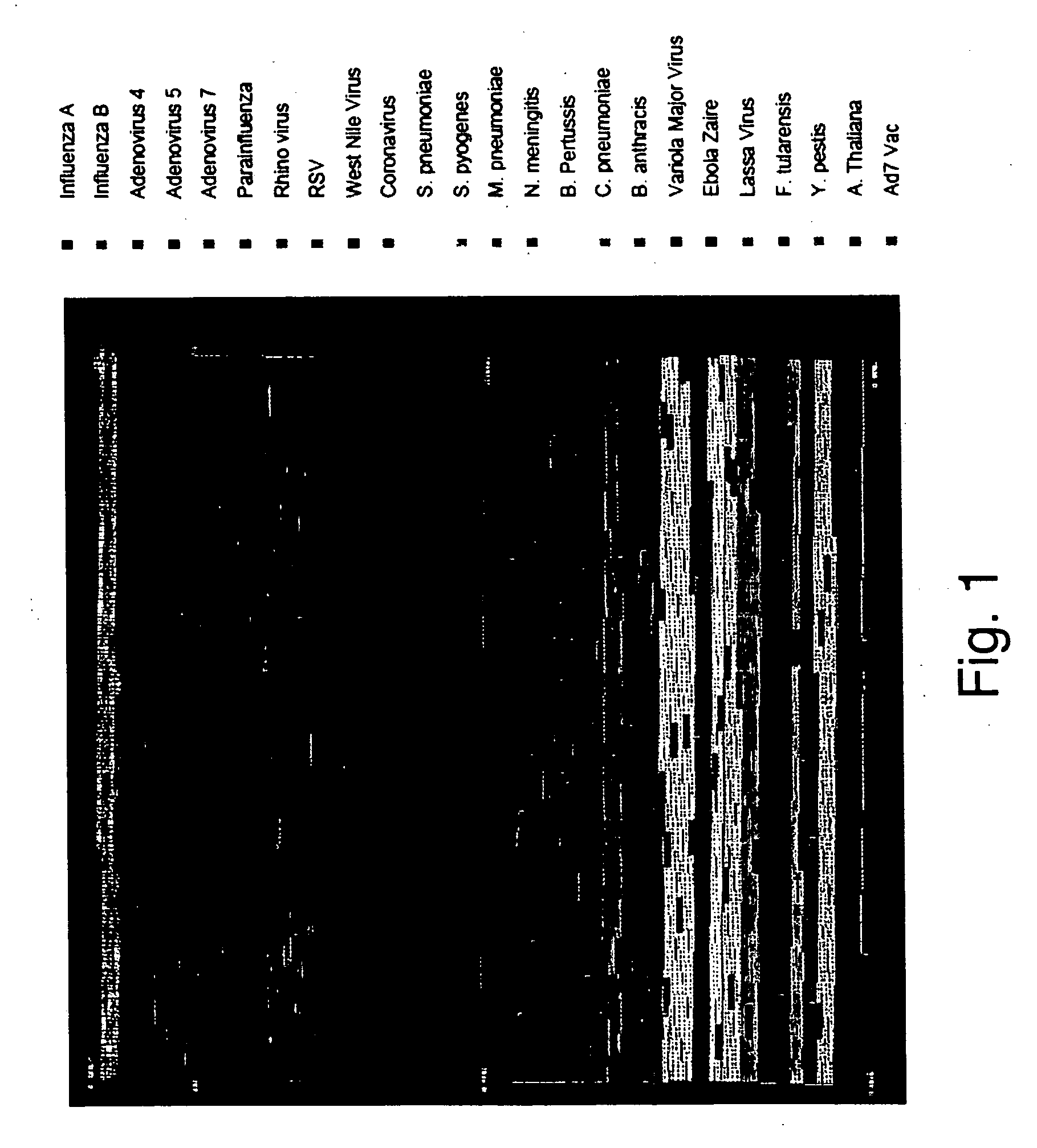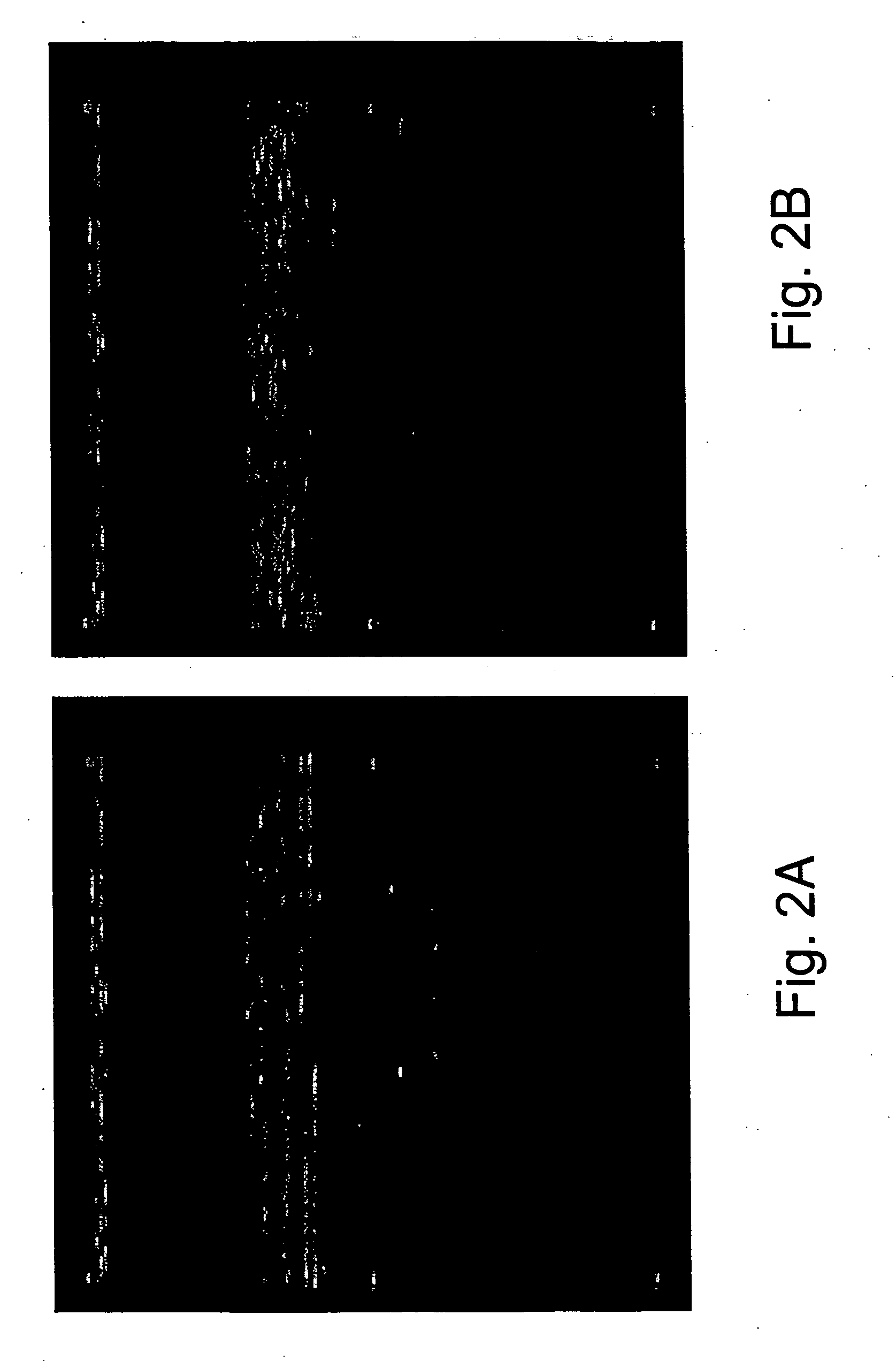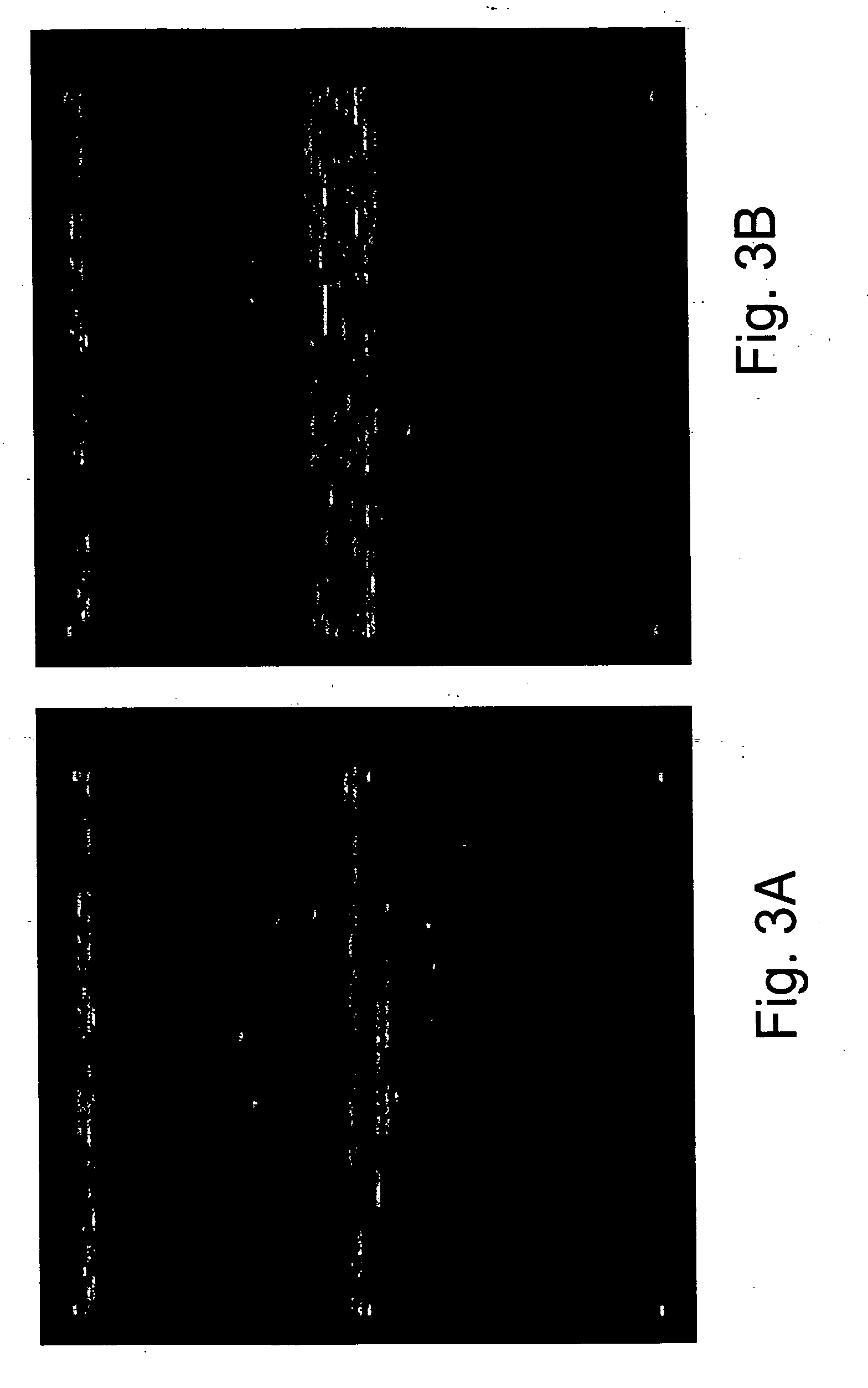Re-sequencing pathogen microarray
a pathogen and microarray technology, applied in the field of resequencing pathogen microarrays, can solve the problems of pathogen detection, introduction of a new set of problems, and conventional methods for amplification that do not scale well
- Summary
- Abstract
- Description
- Claims
- Application Information
AI Technical Summary
Benefits of technology
Problems solved by technology
Method used
Image
Examples
preparation example 1
RPM Version 1 Chip Design
[0433] DNA sequences were provided to Affymetrix for creation of the resequencing microarray chip (RPM Version 1 chip) utilized in the following examples. Submission of the DNA sequence and instruction files to Affymetrix were in accordance with the manufacturer instructions CustomSeq™ Array Protocol and product literature. Probe lengths were nominally 25-nucleotides long and contained a variable (interrogation point) central nucleotide for each of four possible variants (A, C, T or G) in both the sense and antisense directions.
[0434] The target genes selected for the RPMV1 pathogens listed above are described in the version 1 layout shown in Table 8 and the Sequence Listing along with the respective PCR primers used for amplification of the same. The sequences submitted for tiling and chip fabrication were based on the Affymetrix instruction file summarized in Table 7, which corresponds to the sequences appearing as SEQ ID NOs: 1-58. The corresponding “in...
preparation example 2
PCR Primer Design and Amplification Protocols
Degenerate PCR Primers Design
[0442] The objective of primer selection to support conserved (degenerate) multiplex PCR is to design primers that target the conserved regions flanking species-specific variable regions of E1A, fiber, and hexon genes. In general, this method may be applied to any organism, as conserved sequences within a species are a ubiquitous in nature. These target genes were selected based on their function and location within the linear adenoviral genome. E1A is located at the 5′ end of the adenoviruses genome and encodes a trans-acting transcriptional regulatory factor that is necessary for transcriptional activation of early genes. The hexon and fiber genes, which are located in the middle and 3′ end of the adenovirus genome, encode antigenic determinants ε and γ respectively, which determine the viral serotype. Thus, detection and serotyping of ARD-causing adenoviruses can be effectuated by targeting the nucleic a...
preparation example 3
REPI Software
[0447] Raw sequence data from the resequencing microarray chips is provided by the Genetic Data Analysis Software version 2.0 (GDAS) packaged with the microarray reader from Affymetrix. GDAS base calling is based on a previously described base-calling algorithm (Cutler et al., 2001). Each of the FASTA output files containing the base calls obtained from the GDAS software was analyzed using specialized software (REPI) that the present inventors developed.
[0448] In the case of the present invention, the sequence output of GDAS is most often a scattered mixture of contiguous sequence calls (A, T, C or G) that are interspersed with varying amounts of no-calls (n's) where the GDAS software does not make a base call due to lack of amplification, weak hybridization signal on the chip and / or high background hybridization caused by non-specific binding (Cutler et al., 2001). An example output of the GDAS output for the Adenovirus 4 prototype sample for the Ad4FIBER tile region...
PUM
| Property | Measurement | Unit |
|---|---|---|
| Length | aaaaa | aaaaa |
| Time | aaaaa | aaaaa |
| Length | aaaaa | aaaaa |
Abstract
Description
Claims
Application Information
 Login to View More
Login to View More - R&D
- Intellectual Property
- Life Sciences
- Materials
- Tech Scout
- Unparalleled Data Quality
- Higher Quality Content
- 60% Fewer Hallucinations
Browse by: Latest US Patents, China's latest patents, Technical Efficacy Thesaurus, Application Domain, Technology Topic, Popular Technical Reports.
© 2025 PatSnap. All rights reserved.Legal|Privacy policy|Modern Slavery Act Transparency Statement|Sitemap|About US| Contact US: help@patsnap.com



